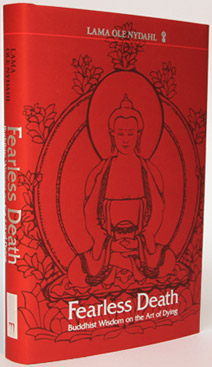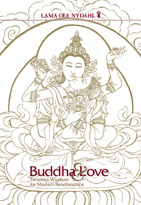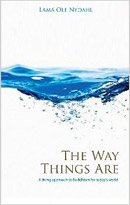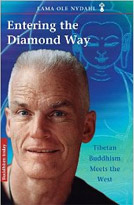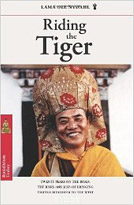How is Lama Ole Nydahl an authority on death and dying?
Lama Ole Nydahl’s interest and expertise on the death phenomena stems from rather dramatic events. In the ‘70s, the late 16th Karmapa Rangjung Rigpe Dorje – head of the Karma Kagyu lineage of Tibetan Buddhism – asked his two main Western students, Ole Nydahl and his late wife Hannah, to help the Tibetan communities exiled after the Chinese military invasion of the Himalayan nation. The harsh living conditions in the refugee camps of Southern India at the time were exacerbated by severe respiratory pathologies in several individuals whose lungs and immune systems, adapted for centuries to the climate of high mountain plateaus, where extremely vulnerable to the humid and hot environment in the Indian jungles.
Facing mortality levels of epidemic proportions, the Danish couple received from Ayang Rinpoche a complete transmission of the practice for the Transfer of Consciousness (Tibetan: Phowa) and had countless grim opportunities for “field training” while helping the dying population in the camps.
Always following the instructions of their teacher, Lama Ole and Hannah then began their activity in the West, aimed at keeping alive the endangered Tibetan Buddhist teachings by transplanting them into the open and fertile culture of Europe, the Americas, and Australia. Here, as an important component of his work, Lama Ole has been teaching in various locations the Phowa practice to tens of thousands of students during courses and retreats of 4-5 days held 12-13 times per year for the last three decades.
Further insights in the process of death and rebirth arose from numerous other events in the intense life of Lama Ole, such as:
- In 1981: the death of his main teacher, the 16th Karmapa – predicted with bewildering accuracy by the Tibetan master during a conversation one year earlier;
- In 1981-83: the eventful quest for the Karmapa’s 17th conscious rebirth and his successful recognition as Trinley Thaye Dorje – in a conversation at the time the Tibetan child remarked that Ole’s hairstyle had changed considerably since the “old days”;
- In 2003: the death of his long time mentor and close friend Lopön Chechoo Rinpoche was accompanied by “miraculous” events witnessed by many students in Europe and Asia;
- A few months later: Lama Ole had his own near death experience after a serious accident during his 88th parachute jump; while lying in a coma he made mental contact with one of his students who was coincidentally dying in the same hospital and guided him consciously to the mental state called the Pure Lands of Highest Bliss.
- In 2007: Lama Ole’s beloved wife Hannah died peacefully in his arms with a terminal illness – Lama Ole had suspended his relentless teaching activity and the couple spent the last few months together in their native Copenhagen, deeply sharing teachings and meditations.
Hannah died sitting in my arms on the night of April 1st, 2007. She was clinically dead fifteen times – over a minute without heartbeat or breath – as the two Buddhist doctors in the room confirmed. Every time she came back through her will power. At the sixteenth time, when it became clear that she should go now, I made Phowa and asked her to move on. The smile on her face the next morning said it all. It was as if she had just tasted something wonderful.
(Fearless Death, page 206)
Combining a deep Eastern understanding of the Buddhist wisdom with uncompromising and unsentimental Western scientific curiosity, Lama Ole is probably the most qualified source of practical information about death and rebirth in the world today.
